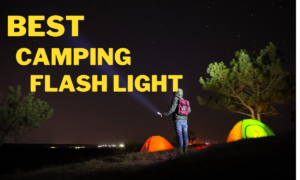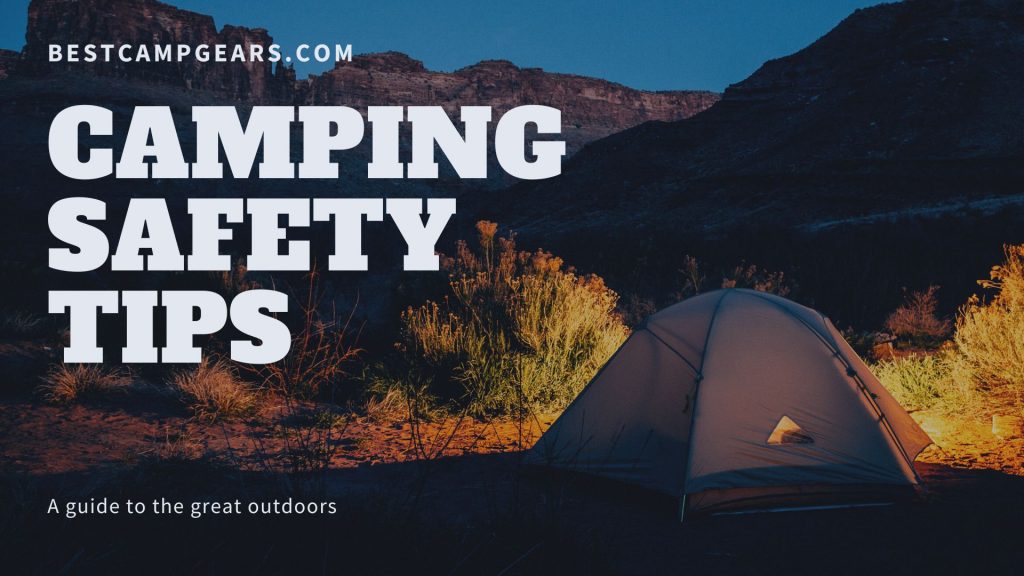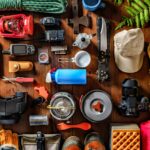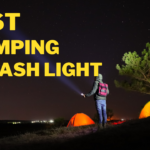Camping Safety Tips
Camping is a well-liked leisure activity that enables individuals to escape from their regular activities and fully appreciate nature. Whether you’ve been camping before or this will be your first time, your safety should always come first. Having peace of mind while on your outdoor excursion can be substantially improved by comprehending and putting into practise important camping safety practises. We will go through the most important parts of camping safety in this extensive guide, “Essential Camping Safety: A Comprehensive Guide to Ensure a Fun and Secure Outdoor Adventure,” giving you the information and resources you need to keep safe while taking pleasure in time in nature.
Camping safety includes a variety of factors, such as pre-trip planning, gear selection, personal safety measures, and emergency readiness. You may reduce risks and completely appreciate the joy and tranquilly that camping has to offer by being organised and knowledgeable.
We will cover important subjects like pre-trip planning, necessary gear and equipment, campsite safety precautions, personal safety advice, hiking and exploring safely, weather and natural disaster readiness, emergency preparedness and communication, and the significance of adhering to Leave No Trace principles throughout this guide.
Knowing the importance of each element and implementing the necessary safety precautions will protect you and your fellow campers as well as guarantee the preservation of the area you are entering.
You will learn important lessons, useful advice, and detailed directions on how to build a secure and fun camping experience as you go through this extensive guide. You will be well-prepared to handle a variety of circumstances, emergencies, and obstacles that may arise during your camping trip if you are familiar with the material.
Therefore, let “Essential Camping Safety: A Comprehensive Guide to Ensure a Fun and Secure Outdoor Adventure” be your go-to reference for all things relating to camping safety, whether you are planning a family camping excursion, a single backpacking trip, or a group expedition. Together, let’s set off on this journey, making sure that your camping trip is both memorable and secure.
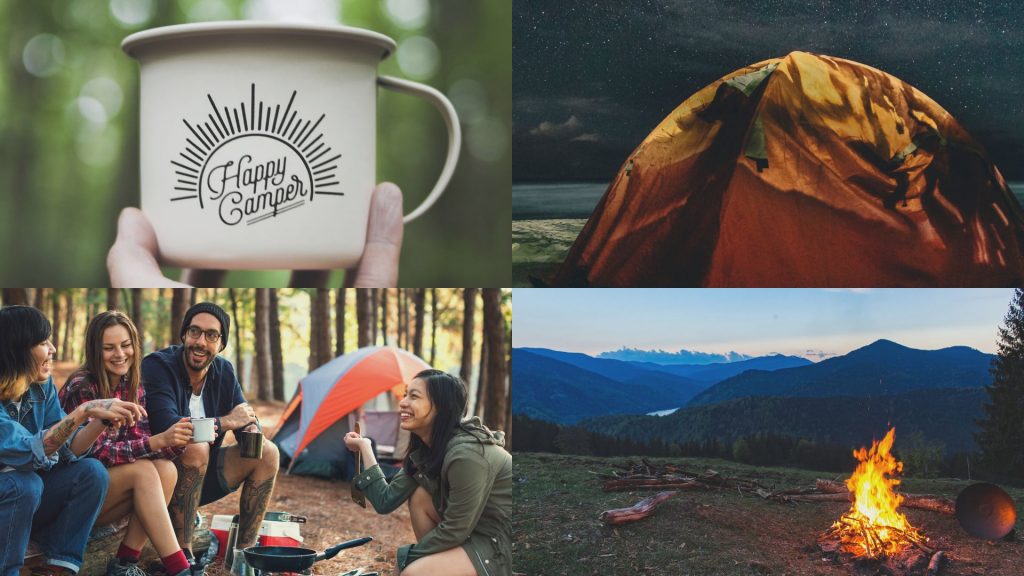
Camping safety preparation as part of pre-trip planning
Camping is a fun outdoor pastime that lets you reconnect with the natural world and take in the splendour of the great outdoors. However, it is imperative to put camping safety first before starting your camping trip. In order to guarantee a safe and happy experience, preparation prior to the trip is essential. In this post, we’ll look at the essential elements of pre-trip planning, with a focus on finding a safe camping spot, assessing the weather, making a camping itinerary, and informing someone of the specifics of your trip.
A. Do Your Research and Pick a Safe Camping Spot
The first step in ensuring camping safety is choosing an appropriate camping location. Do extensive research on suitable campsites, taking into account aspects like accessibility, facilities, and safety records. Consider staying at campgrounds with well-kept amenities, designated camping areas, and established safety procedures. To evaluate the reputation of the campground or wilderness region for safety, read reviews and gather data from reputable sources. In addition, take into account the accessibility of communication networks and the closeness of emergency services in case something unforeseen happens.
B. Look up weather forecasts and conditions
Check the weather forecasts and conditions for your intended camping spot before leaving on your camping vacation. Remember that weather patterns can change quickly, and that your safety when camping depends on your ability to prepare for a variety of weather conditions. To be informed about the most recent weather conditions, such as temperature, precipitation, and wind speeds, check reputable weather websites or use weather apps. To ensure comfort and safety in a variety of weather conditions, make the necessary preparations and pack the proper clothing, gear, and equipment.
C. Make a camping schedule.
A thoughtful camping itinerary is another crucial component of pre-trip planning. Take into account the length of your camping trip and the activities you intend to partake in. Find out about local attractions, hiking paths, and any dangers or risks by conducting some research. Give yourself enough time to rest, unwind, and explore. An organised schedule can help you stay on task, utilise your time wisely, and reduce the likelihood of unforeseen events.
D. Inform Someone of Your Trip Specifics
Always share the specifics of your camping trip with a family member, friend, or neighbour you can trust. Send over a copy of your itinerary, along with the times, places, and length of your visit. In case they need to get in touch with you or help in an emergency, give them the names of the campground, emergency phone numbers, and any other details they might require. Keep your authorised contact person informed of your location and well-being at regular intervals throughout your vacation.
You are taking important steps to ensure camping safety by completing thorough research, choosing a secure camping spot, checking the weather, organising your route, and informing someone about the specifics of your trip. By taking these precautions before your trip, you may reduce hazards, improve your level of readiness, and have a more enjoyable camping experience.
Keep in mind that camping safety should always come first when camping. Accept the challenge, but also be responsible and knowledgeable. With thorough planning ahead of time, you can travel to your camping destination with assurance, knowing that you have taken the essential camping safety measures to protect everyone who will be travelling with you. Have a fantastic outdoor adventure while remaining safe!

Important Tools and Equipment
Having the appropriate supplies and equipment is essential for a safe and effective outdoor excursion when it comes to camping. Gear that has been carefully chosen and prepared can help you stay safe from the weather, ensure a restful night’s sleep, and effectively manage emergencies. This article will discuss the necessary supplies and equipment for a secure camping trip.
A. Tips for choosing and erecting tents:
The correct tent is essential for camping security. Look for a tent that is suitable for the number of guests and weather you anticipate having. Think about things like size, weight, durability, and setup convenience. To keep you dry and sheltered from the ground, make sure your tent has a waterproof rainfly and a strong floor.
Find a flat, high spot away from potential dangers like dead trees or uneven terrain to set up your tent. Remove any rubbish or sharp objects from the ground. To endure wind and rain, make sure your tent is firmly staked and attached. To prevent snags at the last minute, familiarise yourself with the setup procedure before your camping trip.
B. Bedding and sleeping bag considerations:
A good sleeping bag is necessary for a secure and comfortable camping trip. Select a sleeping bag based on the anticipated temperature range of the camping site. Think of things like packability, weight, and insulation. To be ready for sudden decreases in temperature, look for a bag with a temperature rating that can manage slightly colder temperatures than you anticipate.
Make sure you have appropriate bedding, such as sleeping mats or inflated mattresses, in addition to a sleeping bag. These insulate against the chilly ground and provide general sleeping comfort. Choose bedding that is portable, light, and simple to inflate and deflate.
C. Equipment for lighting and fire protection
For camping safety, especially at night, appropriate lighting and fire safety gear are crucial. Bring flashlights or headlamps with additional batteries so you can move about your campground at night. Make sure the lighting you use is sturdy and waterproof.
Always keep a dependable fire extinguisher and a fire blanket on hand for fire safety. You can rapidly put out tiny fires with the use of these tools and stop them from spreading. Know the rules governing fire safety in your camping area and abide by them strictly.
D. Communication and navigational aids:
It’s essential to have dependable communication and navigational equipment, especially if you intend to travel to isolated locations. Keep a map, compass, or GPS gadget with you to aid with navigation and keep you from becoming lost. Before going on your journey, make sure you are proficient in using these tools.
In terms of communication, rural camping places can not always have cell phone reception. Think about getting a two-way radio or a satellite communicator to stay in touch with your group or call for assistance in an emergency.
E. Essentials for a first aid kit:
For camping safety, a well-stocked first aid kit is essential. Bandages, antiseptic wipes, adhesive tape, scissors, tweezers, painkillers, and any other necessary personal prescriptions should all be included. Include products that are relevant to the activities you intend to participate in as well, like blister pads, insect repellant, or sunburn remedies.
Before each camping trip, make sure your first aid kit is regularly inspected to make sure the supplies are enough and have not expired.
In conclusion, necessary supplies and equipment are very important for assuring camping safety. Choose and set up your tent first, get a good sleeping bag and bedding, carry dependable lighting and fire safety gear, bring communication and navigational instruments, and always have a well stocked first aid kit. You may have a safe and pleasurable camping vacation while reducing potential dangers by being well-prepared and equipped.
Measures for Campsite Safety
Maintaining the security of your campground is crucial when going on a camping trip. You may reduce dangers and establish a safe atmosphere for yourself and other campers by being proactive. This page discusses important camping safety precautions, such as picking a good campground, establishing a secure cooking area, keeping food properly to avoid wildlife interactions, following rules for safe campfires, and managing and storing camping fuel.
The first step to a secure camping trip is picking a good spot. Find a place that is level and free from any potential dangers, such as hanging branches or loose pebbles. Camping away from dead trees and flood-prone locations is advised. Check to see if the campsite is away from water bodies as they can attract wildlife.
It is essential to set up a secure cooking area to avoid mishaps and fires. Select a site that is far enough away from your tents and other combustible items to be safe. Remove any debris, grass, and dried leaves that could readily catch fire from the surrounding area. Instead of cooking over an open flame, it is advised to use a specialized camping stove because it offers more control and lowers the possibility of unintentional fires.
To prevent unwelcome interactions with wildlife, proper food storage is essential. Place your food away from your sleeping area in safe containers or bear-proof canisters. It’s also a good idea to hang food from a tree limb that is at least 10 feet above the ground and 4 feet away from the trunk to keep animals away from your food sources.
Guidelines for campfire safety are crucial for preventing uncontrolled fires. Check to see if there are any fire restrictions in the area and whether campfires are allowed before lighting one. Create a fire ring or use an existing fire pit after clearing the area of any flammable things. Never let the campfire burn unattended, and always put it out completely before leaving or retiring for the night. When the ashes are cool to the touch, sprinkle water over the fire and stir the remains.
To avoid mishaps and fires, attention must be used when handling and storing camping fuel. Fuel containers should be kept in a cool, well-ventilated location away from heat sources and sunshine. Keep them away from any open flames or ignition sources, and keep them well packed. Make sure the flame is totally out before refuelling camping gear, and wait until it has cooled before adding fuel.
In conclusion, safety precautions at the campsite are necessary for a secure and satisfying camping trip. You may reduce hazards and make a safe environment for yourself and other campers by picking a good campground, setting up a secure cooking area, keeping food appropriately to avoid wildlife encounters, according to the rules for safe campfires, and handling camping fuel carefully. While taking in the splendour of the great outdoors, keep in mind that camping safety should always come first.

Tips for Personal Safety
Personal safety should always come first when exploring the great outdoors. Any outdoor activity, including camping and hiking, requires you to take the appropriate safety steps to keep yourself safe. The helpful personal safety advice in this article will help you have a safe and pleasurable outdoor adventure.
A. Putting on Proper Outdoor Clothing
Outdoor activities require appropriate attire. Here are some important things to think about:
1. Dress in layers so that you can adjust to shifting weather conditions. This enables you to modify your clothing as necessary to keep your body temperature at a comfortable level.
2. Choose clothing made of materials that drain away sweat, such as synthetic or merino wool. Wear moisture-wicking textiles. You will remain comfy and dry thanks to this.
3. Invest in well-fitting, durable footwear that is appropriate for the terrain. Make sure your boots or shoes have sturdy tread for traction and adequate ankle support.
B. Protection against insects and animals
Outdoor environments frequently involve interactions with animals and insects. To reduce the danger, abide by following recommendations:
1. Applying an efficient insect repellent to exposed skin will help you avoid getting bitten by mosquitoes, ticks, and other biting insects.
2. Use proper food storage: To prevent wildlife from reaching your campsite, keep food items safely stowed in bear-resistant or airtight containers.
3. Respect wildlife: Keep a safe distance when viewing it, and never approach or feed it. In regions where particular wildlife species are known to exist, be aware of your surroundings and use the required caution.
C. Wilderness Hygiene Procedures
In the wild, it’s crucial to practise excellent hygiene to stay healthy and avoid infection. Think about the following techniques:
1. Hand hygiene: After using the bathroom or before handling food, wash your hands with biodegradable soap and water or sanitizer.
2. Dispose of rubbish correctly by adhering to the Leave No Trace philosophy. Bury human waste 200 feet from water sources in a cathole that has been dug at least 6 to 8 inches deep.
3. Bring garbage bags and pack out all of your rubbish, including food wrappers and leftovers.
D. Aquatic Safety Measures
When hiking or camping close to bodies of water, water safety is essential. To safeguard your security, follow these precautions:
1. Water purification: Use techniques like boiling, filtering, or using water purification pills to treat all water from natural sources.
2. Be careful around bodies of water: Avoid swimming by yourself or in uncharted waters, particularly in swift-moving rivers or deep lakes. Always keep an eye on kids near water.
E. Sunscreen precautions
It’s important to protect yourself from the sun’s harmful rays, especially when engaging in outdoor activities. the following advice:
1. Wear sunscreen: Cover exposed skin, such as your face, neck, and ears, with a broad-spectrum sunscreen with an SPF of 30 or higher. Apply again every few hours, particularly after swimming or perspiring.
2. Wear a wide-brimmed hat to shield your face and neck from the sun, along with sunglasses. Wear UV-protective sunglasses as well to protect your eyes from dangerous radiation.
You may reduce hazards and make sure that your outdoor experience is safe and fun by paying attention to these personal safety advice. Remember that personal safety in the great outdoors includes wearing the appropriate clothing, protecting yourself from insects and mammals, practising good hygiene, taking water safety precautions, and using sun protection techniques. Have a great day exploring nature while putting your safety first. Stay prepared. Be mindful of your surroundings.
Safe Hiking and Exploration
It can be exciting and enjoyable to go on a hike and explore the outdoors. However, in order to guarantee a successful journey, it’s crucial to put safety first. In this post, we’ll go over important advice for hiking and exploring safely, like picking the right trails, eating healthy food, staying hydrated, using maps and navigational tools, and knowing what to do if you get lost.
A. Choosing trails that are suited for your ability level:
It’s important to choose hiking trails that are appropriate for your level of fitness and expertise when organising a hike. Take into account the trail’s length, elevation change, and terrain complexity. If you’re a newbie, start with shorter, simpler treks and work your way up to harder trails. To make a wise choice, research route descriptions, opinions, and difficulty rankings. Moreover, be conscious of your physical limitations and abstain from pushing yourself above your limits.
B. Keeping yourself hydrated and fed during hiking:
Maintaining your energy levels and avoiding dehydration or exhaustion during treks depends on proper nutrition and water. Drink a lot of water and eat a healthy lunch before leaving. Bring plenty of water and high-energy snacks with you, such as trail mix, granola bars, or fruits. To keep your energy levels up, consume water frequently, even if you don’t feel thirsty, and eat small, frequent meals. For longer hikes or in isolated locations where water sources may be limited, don’t forget to take extra water and snacks.
C. Maps and navigational techniques:
When hiking and exploring, being able to navigate efficiently is essential. Learn the fundamentals of navigation, including how to use a compass, read topographic maps, and decipher trail signs or markers. Before starting the hike, do some research and examine the route. Carry a trustworthy map, a compass, and a backup GPS system. To make sure you’re on the proper path, pay attention to landmarks and other important elements along the trail. In order to reduce the chance of becoming lost, it is also beneficial to trek with a friend and stick together.
D. Emergency steps to take in the event of getting lost:
Getting lost can happen despite the best of planning. It’s crucial to maintain your composure and follow these emergency protocols in such circumstances:
1. If you find yourself lost, stop and remain where you are. Try to find a place with shelter if possible. It can be more difficult for rescuers to find you if you move aimlessly.
2. Use signalling tools to draw attention. If you have a whistle, mirror, or flashlight, use them. Rocks or sticks can be banged together to produce loud noises. A distress signal is recognised as three brief blasts or flashes.
3. Wearing brightly coloured apparel or using a reflective item will help you to stand out from the crowd. If it’s safe and legal, think about lighting a signal fire to make yourself more visible to search teams.
4. Make use of your resources. If you have a phone, attempt to get a signal so you can call for assistance. Give rescuers your location, the name of the trail, and any other pertinent information, if you can. Move to higher ground or an open area if you don’t have a signal to increase your chances.
5. Conserve energy and limit supplies, especially water and food, to stay warm and hydrated. Using supplies like extra clothing or a space blanket, you can defend yourself against cold temperatures and bad weather.
Keep in mind that the greatest way to prevent being lost is through prevention. Keep to designated paths, hike in groups or with a friend, and let someone know where you’re going and when you’ll be back.
In conclusion, hiking and exploring may be fun and secure as long as the right safety measures are done. You may have a good and secure outdoor experience by picking the right trails, staying hydrated and well-fed, learning navigational procedures, and being ready for emergencies. Always put your safety first, and take care to appreciate nature’s beauty.
Preparedness for the weather and natural disasters
Safety when camping requires an understanding of weather trends and forecasts. Campers may make the required preparations and organize their vacations appropriately by staying informed about the weather. Here are some important things to think about when preparing for weather and natural disasters while camping.
A. Recognising forecasts and weather patterns:
Check the weather forecast for the selected camping location before leaving on a camping trip. Utilise dependable resources, such as meteorological websites or mobile apps, to stay informed about the weather in your area. Take note of the weather’s warnings for severe weather and other parameters like temperature, wind speed, precipitation, and so on. Campers can make wise choices and modify their plans by being aware of the predicted weather trends.
B. Getting ready for storms, lightning, and a lot of rain:
When camping, thunderstorms can provide serious concerns. It’s critical to get shelter as soon as a thunderstorm threatens. Avoid taking cover beneath large trees or close to distant objects since lightning can strike there. Find a strong structure or a completely enclosed car instead to take cover. Find a low-lying spot away from trees and water, crouch down, and avoid making direct contact with the ground if there is no shelter available.
Campers should make sure their tent is put up correctly and is waterproof while it is pouring heavily. To avoid floods, clean out any drainage channels around the campsite. Camping should not be done in low-lying locations that can flood after a very strong downpour. Keep an eye out for flash floods in regions that are vulnerable to them, and if necessary, relocate to higher ground.
C. Safety precautions for excessive cold or heat:
Camping outings can be tough in extremely hot weather. Even if you don’t feel thirsty, it’s crucial to stay hydrated in hot weather by drinking lots of water. Wear breathable, light-weight clothing, often apply sunscreen, and look for shade during the warmest hours of the day. Take immediate action if any member of the group exhibits symptoms of a heat-related illness, such as heat exhaustion or heatstroke, by being aware of the warning signals.
Campers should be equipped with the right clothing and equipment to stay warm in cold weather. To prevent hypothermia, layer your clothing to effectively retain heat and utilize thermal sleeping bags and insulated sleeping pads. For added warmth, pack extra blankets, hats, and gloves. Avoid wearing wet clothing, and look out for hypothermia or frostbite symptoms.
D. Safety measures for wildfires and earthquakes:
It’s important to be aware of the potential threats posed by earthquakes and wildfires when camping. Determine safe areas away from trees, cliffs, and unstable structures if you are camping in an earthquake-prone area. When there is an earthquake, get to the ground, find a substantial item to hide under, and hang on until the shaking stops.
Pay close attention to any local fire restrictions or bans and strictly adhere to them to ensure your protection from wildfires. When it’s dry and windy outside, refrain from lighting an open fire. Be prepared to leave right away if a wildfire breaks out nearby. Prepare an emergency kit containing the necessities, such as food, water, a first aid kit, and a radio that runs on batteries. Keep up with evacuation routes, and pay attention to any directions given by local authorities.
In conclusion, being prepared for weather-related and other natural disasters is essential for a secure and pleasurable camping trip. In order to camp safely, it is essential to understand weather patterns and forecasts, be ready for thunderstorms, lightning, and heavy rain, be aware of safety precautions for excessive heat or cold, and be aware of earthquake and wildfire safety procedures. Campers may reduce risks and have a safer outdoor vacation by being well-prepared and educated about potential weather and natural catastrophe concerns.
Communication and Emergency Preparedness in Camping Safety
Prioritising emergency planning and communication is essential when going on a camping trip in order to guarantee a safe and secure experience in nature. This thorough manual will cover the essentials of emergency readiness, such as making an emergency plan, providing basic first aid, using emergency communication tools and signals, and understanding when and how to call for assistance.
A. putting together a disaster plan
Making a well-thought-out emergency plan is one of the first stages in being prepared for an emergency when camping. This strategy should contain a thorough schedule for your trip, including where you’ll be camping, what you have in store, and when you’ll be back. Give a trusted friend or relative who is aware of your camping trip and can start emergency procedures if necessary a copy of this plan. Additionally, become acquainted with the local emergency services, such as the closest hospital or ranger station, and make sure you have easy access to their contact information.
B. CPR and fundamental first aid procedures
It’s important to have a fundamental understanding of first aid procedures and cardiopulmonary resuscitation (CPR) because accidents and injuries can happen when camping. To acquire the required information and abilities before your camping trip, think about completing a first aid and CPR course. Discover how to treat typical camping wounds like cuts, burns, sprains, and insect bites. Make sure your campground is equipped with an easily accessible first aid kit that is well supplied. The safety and wellbeing of everyone involved can be significantly improved by knowing how to react quickly and effectively to medical emergencies.
C. Signals and emergency communication equipment
It is critical to have backup communication methods available in case of emergency when camping in distant locations where cellular reception may be spotty or nonexistent. Keep in touch with your camping party or call for assistance if necessary with the help of portable two-way radios or satellite phones. Before your vacation, become familiar with how to use these gadgets, and make sure they are functional and well charged. Learn popular emergency signs that might draw attention in case of crisis, such as whistle blasts or flashlight signals.
D. recognising when to seek aid and how to do so
Knowing when to ask for assistance and how to do so can save lives in a camping disaster. Do not be reluctant to call for help if a situation develops that is beyond your scope of control or poses a risk to your safety. Call the proper emergency number for your locality in the event of a serious injury, uncontrolled fire, extreme weather, or any other life-threatening crisis. Clearly and concisely describe your scenario, the area involved, and the number of people affected. Until the emergency personnel tell you differently, stay on the line.
In conclusion, communication and emergency planning are essential to camping safety. For a safe camping trip, it’s crucial to develop a well-organized emergency plan, learn some basic first aid, have dependable communication equipment, and know when and how to contact for help. You may appreciate the beauty of nature while safeguarding the safety and well-being of yourself and your camping companions by giving these considerations priority and being ready for unanticipated occurrences.
The Leave No Trace Guidelines: Promoting Environmental Responsibility and Camping Safety
A great way to relax, connect with nature, and make enduring memories with loved ones is to go camping. But as outdoor activities grow in popularity, it’s more important than ever to develop ethical habits that protect the environment and advance camping security. The “Leave No Trace” principles are a collection of rules created to reduce our impact on the environment, ensure proper trash disposal and recycling, and foster respect for wildlife and natural habitats. We may take pleasure in the great outdoors while ensuring its preservation for future generations by using these guidelines to our camping outings.
A. Environmental Impact Reduction:
Reducing our impact on the environment is one of the main ideas of Leave No Trace. Campers must be aware of the following behaviours to achieve this:
1. To reduce the impact on virgin places, choose well-established campsites if possible. To avoid soil erosion and potential pollution, stay away from pitching your tent too close to water sources.
2. Keep on Designated routes: Remain on designated routes to protect delicate plants and prevent upsetting wildlife habitats. The ecology may suffer irreparable harm if you go off the route.
3. Respect the vegetation by being careful around trees and plants. Avoid removing plants, breaking branches, or taking blooms. Keep in mind that they are essential to preserving the ecological equilibrium.
4. Keep Campsites Compact: When setting up your campground, make sure there is enough room for other people to enjoy the area. Do not unduly increase the campsite’s footprint.
B. Recycling and Waste Disposal Done Right:
Camping safety and environmental protection depend on proper garbage disposal. Here are some tips for responsible garbage management:
1. The camping adage “Pack It In, Pack It Out” states that you should take all of your rubbish and possessions with you when you depart. Put waste in designated trash cans and dispose of it correctly.
2. Reduce waste by utilizing reusable containers, water bottles, and utensils as little as possible. This lessens the quantity of disposable waste that is produced while you are travelling.
3. Use established fire rings and only burn small branches and twigs that you find on the ground if campfires are allowed. Foil, plastic, and other non-biodegradable materials should never be burned.
4. Check to see whether there are recycling facilities at your campsite or in the neighbourhood. Sort recyclables from other trash and dispose of them properly.
C. Wildlife and natural habitats should be respected.
A special opportunity to view animals in its natural settings is provided by camping. Both your safety and theirs depend on you treating them with respect and acting responsibly:
1. Maintain a Safe Distance: Enjoy animals from a distance. Avoid approaching or feeding them because doing so can alter their normal behaviour and put both you and the animals in danger.
2. Securely Store Food: To keep animals away from your campground, store food in airtight containers. Wild animals that get used to eating human food may start to pose a threat to both themselves and other people.
3. Avoid Wildlife Corridors: Be aware of any natural migratory and foraging routes used by animals. To prevent disturbing their movements, avoid camping or hiking in these regions during critical times.
4. Reduce Noise: Loud noises might disturb wildlife’s habitats and frighten them. Low noise levels are a sign of respect for the woods’ tranquilly.
We can have a good impact on the environment and guarantee that everyone has a safe and pleasurable camping experience by following the Leave No Trace guidelines. Remember that camping responsibly helps to protect the natural world’s beauty while also ensuring our personal safety and the safety of future generations who want to experience the outdoors’ wonders.
Last Verdict
In conclusion, putting camping safety first is essential for ensuring a safe and fun outdoor vacation. You may reduce dangers and make sure that your experience while surrounded by nature’s beauties is enjoyable by putting the crucial advice and recommendations contained in this comprehensive book into practise.
Starting with preparation before the trip, camping safety covers a variety of topics. Planning your route, researching and choosing a safe camping area, and monitoring the weather are essential stages. Giving someone advance notice of your travel plans serves as a preventative strategy and adds an additional degree of security.
For camping safety, it’s essential to arm yourself with the proper supplies. It is crucial to set up your tent correctly, choose appropriate bedding, and make sure you have enough lighting and fire safety gear. You can stay on course and contact aid if necessary using communication and navigational tools. To manage any minor injuries or medical situations, a fully filled first aid bag should always be accessible.
To reduce potential risks, it’s crucial to maintain a secure campsite. It’s crucial to pick a campsite that’s safe from hazards like unstable trees or steep hills. Wildlife encounters can be avoided by setting up a secure cooking area and following safe food storage procedures. The danger of accidents is greatly decreased by following the recommendations for safe campfire use and handling camping fuel.
While camping, personal safety should never be ignored. Important considerations include dressing adequately for the outdoors, taking precautions against insects and mammals, maintaining good hygiene, and making sure the water is safe. By using sun protection methods, you can protect yourself from dangerous UV radiation.
When hiking or exploring, it’s important to pick trails that are appropriate for your experience level, remain hydrated, and eat a healthy diet. For hiking safety, using navigational techniques and having emergency plans in place in case of getting lost are essential.
Another essential component of camping safety is being ready for inclement weather and natural disasters. Survival requires an understanding of weather patterns, preparation for thunderstorms, harsh heat or cold, and expertise in handling crises like earthquakes or wildfires.
Last but not least, adhering to the Leave No Trace principles assures minimal environmental impact. The beauty of the wilderness is preserved for future generations by proper waste management practises, recycling, and care for wildlife and natural habitats.
In conclusion, your outdoor excursions should always centre on keeping safe while camping. You may protect yourself and others by using the advice and recommendations in this thorough book, enabling a safe and happy camping trip. Put safety first, be ready, and make lifelong experiences while being embraced by nature.
Mustakim Hasan
As an engineer with a keen eye for detail, I combines their technical expertise with a fervent passion for the outdoors. At bestcampgears.com, I share in-depth reviews on the latest camping, outdoor, and sports products, offering readers valuable insights and reliable recommendations. Drawing from personal experiences and a love for nature, I also provides practical tips, tricks, and guidance to enhance your outdoor adventures. Whether you're a seasoned camper or a budding outdoor enthusiast, Bestcampgears's blog is your go-to resource for all things camping and outdoors.

Oklahoma Joe’s® Rambler Charcoal Grill Review: A Comprehensive Guide
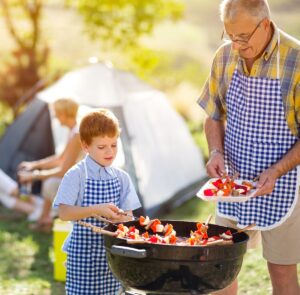
Best Portable Smoker for Camping: Top Picks for Outdoor Cooking
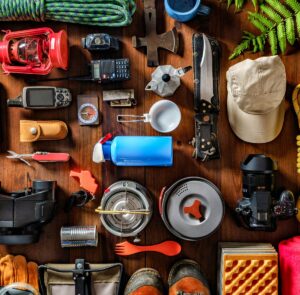
50 Most Forgotten Camping Items: Essential Gear You Always Forget to Pack


The best camping saws 2024: portable, lightweight, and effective
